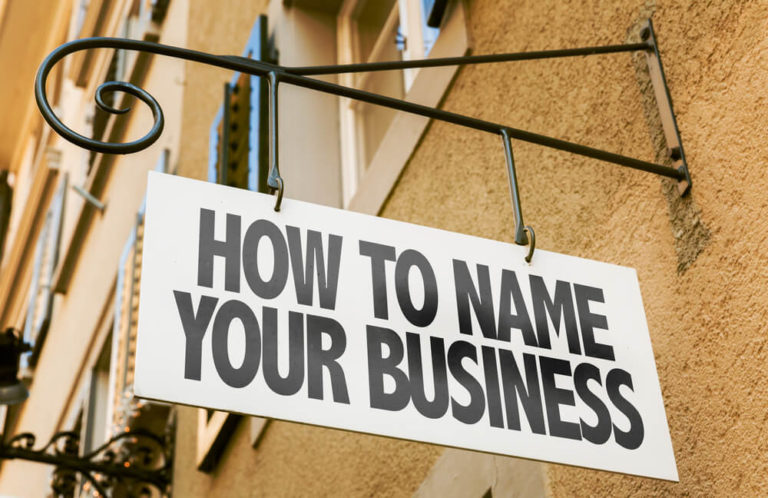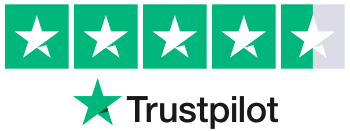
Starting your own web design business is not an easy task. In fact, it requires hard work, persistence, and ambition to begin. You may also face some tough decisions in your way that can impact the success and growth of your business.
This post covers the stages of your journey. For this purpose, here are step-by-step instructions for starting your own web design business. If you’re planning on launching your own design company, dive into the resources below before you get started.
Table of Contents
What is Web Design?
Web design is the design of websites that you see on the internet. However, it used to focus on designing websites for desktop browsers earlier. Since the last decade, design for mobile and tablet browsers has become essential.
Basically, web designing improves the look, layout, and, in some cases, contents of a website.
A great web design is easy to use and visually pleasing. It has to suit both the user group and the brand of the website. But many web pages are designed not to distract or confuse users by their appearance.
Skills You Need to Know to Become a Web Designer
Web designers create the design and layout of a website or web pages. With this intention, they plan, create and code internet sites and web pages, many of which combine text with sounds, pictures, graphics and video clips.
As a web designer, you can work on a brand-new website or update an already existing site. For designing web, you should learn the following skills:
1. HTML
Nowadays, it is expected for web designers to know how to code. HTML stands for HyperText Markup Language. It is the coding language. Basically, HTML put content on a web page and give structure to it. That means it’s how you work with words into headlines, paragraphs, and footers. It also works with visual contents like photos, videos, and graphics on a website.
2. CSS
Here comes CSS or Cascading Style Sheets which is HTML’s greatest companion. CSS code instructs browsers how to format and style HTML for the web. In other words, CSS is what makes all the text and content look pleasant. With it, you can change the fonts, adjust the colours, or add beautiful background and much more to do! Moreover, CSS is the place where you can show your creativity and feed others eyes with your work.
If you want to learn web design, HTML & CSS are perfect skills to start with. Level 3 Diploma in Web Design (HTML5 CSS3 and Bootstrap) will be a great choice for you.
3. Visual Design
Web design is basically a subset of the larger field of visual design. So, It is obvious that you need design knowledge to be a web designer.
Learn visual design as its emphasis is on digital products like web content. Above all, when you know how to do visual design, you learnt the basic design principles to be a web designer.
4. UX
UX is another skill a web designer should achieve. It stands for ‘user experience’, or how people feel about it when they are using your website. Most importantly, note that UX is about approaching your designs from a user’s perspective on how to design a website that users need. To do that, you’ll research your users.
5. Design Software
It would be best if you had expertise in design tools like Adobe Photoshop, Illustrator, and Sketch. Subsequently, all designers use them for important parts of their job like creating mockups, designing assets, and of course, modifying and enhancing photos. Knowing and learning the industry standards will be helpful in every case and critical in many. Therefore, you should learn how to use them.
6. JavaScript
Besides coding up your designs using HTML and CSS, you can also program using JavaScript. As a result, you’ll win the competition among other designers. It allows you to have static elements on your website and make them interactive. Most importantly, websites look great after using JavaScript.
Soft Skills Web Designers Needs
After learning the design and tech part, you need some soft skills to make yourself professional and effective in the web design business. These are skills most web designers possess. Try to acquire as many gifts from those you can.
Time Management
Firstly, whether you’re interested in starting a web design company or working for a company, you’ll need to learn how to manage time. You can learn about some productivity apps like task lists or calendars, or, especially if you’re in a large organisation, online courses on time management will obviously help you.
Communication
Staying connected is also a must-have skill for a web designer. You can’t do good business without effective communication. You’ll have to keep clients up-to-date on the progress of their projects. Likewise, you will be able to promote your ideas and explain your creations to others through communication.
SEO / Digital Marketing/ Social Media
The skills of SEO (search engine optimisation) looks more for a marketing person or salesperson than a web designer. But things are different as the internet is the way. While web designing, you have to keep SEO in your head. Likewise, you want more visitors to your web page or your customer’s page, and you can’t go another way. This will make your way smoother in your web designer journey.
Business Planning and Management
As a web designer, you should make sure the company is profitable and sustainable. It would help if you had a clear idea about the goals of the company, whether as an employee or your own business. This will guide you in work.
Besides these skills, imagination, creativity, patience, attention to detail, analytical skills and excellent IT skills can help you to flourish as a good web designer.
How to Start Your Own Web Design Business: Step-By-Step Instructions
If you want to know how to start a web design company, you’ve come to the right place. Although creating your own web design business requires hard work, tenacity and persistence. Here is the step-by-step instruction below to start a web design company:
- Learn web designing
- Prepare for a great start
- Build your support team
- Decide on your products and services
- Name your web design company
- Write your business plan
- Address legal and administrative requirements
- Create your proposals and contract templates
- Formalise project management and communication
- Create your website launch process
- Craft your brand
- Build your online presence
- Find your clients
Let’s start!
1. Learn Web Designing
Before starting your own web design business, you need to learn web designing first and be an expert in your field. Certainly, a blend of your tech side and good management skills will help you build a solid career in this sector.
Before learning web design, you need a clear idea of what to know. In fact, learning HTML, CSS will make you a complete web designer. This Diploma in Web Design course can help you get the skills you need to become a web designer.
By learning Bootstrap, you’ll be able to utilise front end frameworks and other CSS-based frameworks, which will be in your hand. And you will also code on the back end server-side with CSS.
If you want to understand frameworks like jQuery fast, you need to understand the JavaScript syntax. However, JavaScript is a requirement to understand AJAX. It let you load only the content on your websites without loading the entire website again.
But, The best thing is, you don’t need prior experience to get started for any of our courses. Check out their other courses on web designing too.
Level 3 Diploma in Web Design (HTML5 CSS3 and Bootstrap)
Level 3 Diploma in Web Design (HTML5 CSS3 and Bootstrap)
2. Prepare for a Great Start
After learning web designing, set yourself for a smooth start. Make sure everything you will work with is in the right place. Some pro-tips of web design for start-ups are below:
Create Your Very Own Workspace
Looking to start your own web design business from home? Firstly, set up a friendly environment that gives you a pleasant vibe. Decorate a corner of your house as your workplace. Work/life balance is undeniable. To minimise your struggle, divide a line between your work and personal life. Secondly, Ask your family or whom you are living with not to interrupt during working hours.
Know Your Contingency Plan
Most importantly, you can face internet or electricity problems while working from home. Plan an alternative for that. Know where you can sit and work for a couple of hours outside your home. That place must have a sitting arrangement and wireless internet connection. You can choose a local coffee shop or a public library near you.

Invest in the Best Hardware and Software
Consider buying the right tool for creating graphics, designing photos and documentation. As a web designer, buy the best computer you can afford. Then, figure out which software you need. Certainly, get yourself an external monitor, a printer and scanner and an alternative computer for backup. Similarly, buy a good camera if you are taking photos for your client’s website.
Have a Bullet-proof Backup Strategy
Ensure backup plans and reliable security for your office and computer. Having these set in place will let you sleep properly at night. Select file backup to Google Drive, OneDrive, Dropbox or any other.
Keep It Simple
You should try to make everything simple and easy to avoid burnouts.
- While choosing your technology, look for tech solutions that offer the features and capabilities you’ll need for the long term.
- Keep in mind how you can simplify the workflows.
- Look for tools that minimise steps per task.
Trial the products before you start. Spend time working with the technological things before you commit.
Think about Financial Accountability
Be sincere with your business calculations. Start bookkeeping and client billing information storing right from the beginning. You can use an online accounting tool.
Make sure your chosen the easiest solution for invoices preparation, expenses tracking. This information is not only to make your payment but also for future project purposes.
Know Exactly How You’ll Get Paid
Make sure how you will receive payment, including cash, credit cards, and online methods such as PayPal. You can set expectations around deposits, penalties for late fees, and consequences when invoices go unpaid. You may also consider using a payroll service.
3. Build Your Support Team
Now that you’ve got your workplace, processes and tools set, it’s time to encompass yourself with a community for support.
Find Your Team
Even when working alone at your home, look for ways to interact and engage with people of your field in the web and business community. Try networking with other freelancers and web professionals, which will help you a lot in your work
Join online communities like Facebook, LinkedIn, or other social media channels. Actively participate in both online and in-person communication and discussions
Work with a Mentor
Mentoring can help you raise confidence, enhance skills, and set your goals. When you think about startups, a mentor who’s already made that transition can help you with wisdom which only gained through experience.

Hire Employees
You can also hire some web designers if you want to make your business bigger. You cannot handle all of your work rush alone after getting a massive number of clients. So, consider hiring people for your business.
Assemble Your Whole Team
Build a circle of known and trusted partners who provide complementary services that work in sync with yours. You’ll all benefit without cannibalising clients and work.
For example, you can pair with local partners specialising in Information Technology (IT), search engine optimisation (SEO), social media, photography, online advertising, video editing or any other service area where you are uncomfortable.
4. Decide on Your Products and Services
Define your services before you make your product. Afterwards, design your strategy and make products accordingly. This will help you to stay focused, and you will reach your goal easily.
Clarify Your Service Offerings
You can make a list of services you are providing to your clients. While doing this, prioritise your strong points to gain competitive advantages. You might offer the following:
- Full website design and development
- Site rebuilds or redesigns
- Website maintenance services
You may also offer services, like:
- Content creation
- Managed web hosting
- SEO
- Social media maintenance
- Online promotional services
- Email marketing
Productise Some Services
When a web designer delivers his work correctly, he gains recurring revenue. Recurring revenue occurs when you’re providing recurring value to the clients. Turn your services into a product that works in the short term, yet make it renewable. You can earn repeated revenue by selling your services as a value product to people.
Start defining what you do, the value of your work, and how much it costs every month. This will make your work easy.
Think about Profit
It’s better to charge for value instead of time. Figure out which pricing model is the best match for your web design business. Defining a per-project price can avoid talking about how every minute you spend. Clients may feel price negotiations based on specific features or items are not necessary.
Also, remember to review the pricing models of other web designers. Your goal is to be competitive in the market. However, don’t scare off clients based on your price. Do not overprice your services.
You can use hourly rates to estimate the project cost. Remind that you have to cover your sick days, holiday time, benefits, taxes, retirement, and the other expenditures of your running business. You may consider the fees associated with receiving online payment.
Is what you charge is all about meeting your expenses? No! You need to make a handsome profit. That’s why you should analyse the market demand firstly and see what your competitor is providing at what costs. Price offerings in a competitive manner that provides value and is also fair to you and your goals.
5. Name Your Web Design Company
Your name plays a vital role in-
- Attracting clients
- Submitting legal documents to form your business
- Selecting a domain for your business website
That’s why name your web design company with thoughtful consideration and planning, obviously.

Consider your long-term business goals while deciding whether to use some business style name or your personal name.
- Do you see yourself creating an agency or growing your personal brand by staying a freelancer?
- Are you interested in public speaking, writing books or online courses in the future?
- Do you intend to grow a personal brand to build credibility?
Answer all these questions and give your company an appropriate name.
6. Write Your Business Plan
Write a solid business plan. Your business plan should-
- Define your business vision and identity
- Set financial goals and targets
- Include your products pricing options
- Set long-term goals around new products/services
- That, estimate your expected expenses and income
- But not least, define your ideal clients
Consider all these facts and draw a profitable business plan.
7. Address Legal and Administrative Requirements
Here’s where you get your paperwork done. Plan how you’ll structure your business, arrange insurance and benefits programs, check with governments for any licensing requirements. After doing all these, manage your time, so you set yourself up to succeed.
Establish Your Business Identity
Decide what type of business are you going to start? Is it a sole proprietor, partnership business or corporation? Consider hiring a lawyer to advise you with the necessary paperwork.
Get Licensed
Check your local government website to determine conditions for business licensing, permits and made-up name registration.
Plan Benefits
If your former job included retirement, medical or some other benefits, you’d need a plan to get similar items in place. You should:
- Identify if you will get medical or dental benefits through any means
- Make your retirement plan through your business or other means.
- Fix your holiday policy.
- Finally, know how you will communicate time off to customers.
Ace the Day-to-day Tasks
Identify the main tasks that would benefit from regular execution. Introduce processes, checklists and organising strategies for:
- Designing a new website
- Pre-launch clean-up
- Post-launch testing and approval
- Any periodical tasks around tracking, reporting, or bookkeeping
8. Create Your Proposals and Contract Templates
Do the Pre-work to Confirm Client Fit
Before proposing work for a client, make some additional pre-work that can help you minimise re-work. Yet, do not go for any project that is not a good fit for you.
You’ll also need to make sure prospective clients have a firm grasp of critical factors involved in creating a flourishing web design for them. In addition, clarify the purpose, measurable objectives, budget, schedule, expectations to the clients.

Create a Contract that Shields You and Your Clients
Certainly, a web design agreement shields you, your time, and your mental condition. Like any other contract, a web design contract describes the business and legal relationship between you and your client. It also links the personal relationship concerning business practices, communication and interactions.
Lawfully, it’s a mutually binding agreement. Here each party makes commitments and compensates for the work to create them. If any party fails to meet its obligations, the contract becomes the basis for a possible legal claim.
Most importantly, the web development agreement that’s fit for you may not fit others.
9. Formalise Project Management and Communication
Install an onboarding process and manage the scope effectively. After that, find a time tracking tool to analyse the amount of your or hired people’s work activities. Make effective communication with everyone by any preferable means. But, it’s critical to have the right tools and means to help you stay efficient.
Formalise Project Management
Get a convenient online tool that makes communication easy for you. For instance, managing projects through email is unmanageable once your agency gets bigger. There are plenty of tools. Search for the best one.
Establish an Onboarding Process
After attaining and settling your clients, sign the contract. Now go for planning the whole procedure. While planning the process, you can use including:
- Firstly, an intake form or checklist
- Secondly, hold a project initiating a meeting
- Thirdly, educate customers around expectations
However, there are diverse types of clients you may encounter. So, plan to adjust your communication method to suit every kind of client’s different needs.
Track Time Obsessively
Track your time while working. See which task takes how much time of you. Also, check emails and meet phone calls adequately.
10. Create Your Website Launch Process
After going through the previous stages, it is time to launch the website. Check the content and technical sides, including SEO and analytics, Validation of HTML and CSS, Accessibility, Security, connection to social media channels, Google verification, Image/JavaScript/CSS optimisation and many more. Then it is time for you to prepare your client for their website launch.
Level 3 Diploma in Web Design (HTML5 CSS3 and Bootstrap)
Level 3 Diploma in Web Design (HTML5 CSS3 and Bootstrap)
11. Craft Your Brand
Your company begins with a logo and colour design. But this is beyond that. It’s mostly about communicating to the public about your brand, which will affect buying behaviour. To show purpose, your style will represent your values, your strengths, your voice. Is it stylish and trendy, or mature and sophisticated? Expensiveness service or economical choice?
Your brand is unique! Tell a great story that makes clients want to hire you instead of your rivals.
Start with business cards, flyers or brochures. Do any giveaways that keep your name in front of possible clients.
12. Build Your Online Presence
It’s time to show the world you and your website. Create a social media presence that attracts your latent clients! After that, take time to connect with the public on social and build a thorough marketing strategy.
Create a Website for Your New Business
Create a showcase of your work on social media. Meanwhile, show your offerings, demonstrate the value you provide to your clients and cover your policies.
Surely nothing can describe your story better than your portfolio of previous work. It’s absolutely fine to start small, but build up and improve your site in the background. As you finish with blogs, publish and test the site with your potential clients. Collect feedback from them.
As a minimum, your site should include:
- Your story
- Contact information
- Services provided
- Portfolio
- Certificates and success stories
Certainly, include details of any certifications or specialised training if you have taken it. Make sure readers know you are trained, experienced and skilful. They can surely utilise your expertise. Show how you stand out from the general, with a strong background and formalised knowledge.
Establish Social Media Connections
Create social media accounts. You can consider separating from business profiles to your personal profiles. Pour your efforts on the best platforms for reaching your target viewers. Analyse which platforms your audience is most likely to spend time on, based on their demographics such as age, gender, geographic location etc.
Get Customers to Your Website
Getting clients to your site requires a marketing strategy. Use tools such as Google AdWords or Facebook ads to raise awareness about your business and products.
13. Find Your Clients
Now all set! It’s time to find your first client.
Focus on a Niche
Consider specialising in what types of projects you do or which kinds of clients you take. Communicate your niche. Specialisations can help you focus on market space, geographic area, or a specific type of site.
Your niche should intersect both your skills and passions. If any work irritates you consider transferring, automating, or deleting it from your work list. The advantage of spending all your time doing your best work tends to the higher work quality. The outcome for your clients tends to be better, and you become happier.
Know Your Audience
Once you’ve identified your sweet spot, it is time to know your clients, obviously. Customer satisfaction is crucial to the success of any business. Your satisfaction is no less to that. Engaging with your clients who are the accurate match for you is one way to aid that.

Strategise to Find Clients
Business is an ongoing process to assure there’s always work coming in the door. You have to find new clients as well as retain old customers.
Top tricks to find more clients:
- Firstly, consistently do your best work
- Secondly, leverage your existing network by communication
- Thirdly, offer your target audience lead magnets in exchange for their email address
- Finally, use a Customer Relationship Management Tool to keep track of your contact, the results of that contact, and possible future follow-up chances.
Utilise above-mentioned ways to find and meet folks easily.
- You may meet potential clients in unusual venues, including the gym, Starbucks, or a concert.
- Identify how and where you find and meet prospective clients.
- Always carry business cards with you.
- Have an advertising strategy.
- Answer to requests for discounts, such as from non-profit businesses or friends and relatives.
- Decide whether referrals deserve a reward, such as a token thank-you gift or credit toward the future task.
Web Design or Startups
Focus on launching a great startup. Because, the key ingredient of a successful product is the creation of powerful, dynamic and visually pleasant displays.
Understanding human vision is required, along with the knowledge of visual perception, to make such high-quality presentations. So, It would be best if you also have considered the pros and cons of starting your own web design business.

What are the Pros of Web Designing?
There is a wide range of pros of web designing. Few are the following:
- The demand for websites will not end in near future.
- This business is enjoyable, creative, and you’ll learn a lot from working with many types of clients.
- You can do this work from anywhere. In addition, it will allow you to work/life balance, and you will enjoy more family.
- However, you can start this business without any formal qualification or degree. For starting, you need knowledge and training to raise your expertise and make you prepare better.
After that, you can expand your business over time by offering complementary services as you gain expertise.
What are the Challenges of Web Designing?
Firstly, in a fast-growing field, you can’t be static. You’ll need to stay up to date with current or new trends and technologies.
Secondly, for immense opportunities in the field, there’s a lot of competition.
Thirdly, You may have to work alone at your computer for long periods. It may require you to change your lifestyle.
Are You Ready to Start a Web Design business?
In conclusion, you learnt the steps of how to start a web design agency or how to start a web design business from home. However, you can choose either option that suits you. Learn web design well and take it to a new professional level.
Level 3 Diploma in Web Design (HTML5 CSS3 and Bootstrap)
Level 3 Diploma in Web Design (HTML5 CSS3 and Bootstrap)
Recent Posts
- How Online Courses Can Enhance Your Career Prospects
- 6 Ways Online Faxing Can Enhance the Productivity of Your Small Business
- The Top Cyber Threats Looming Over Small Business Fortunes
- Benefits of Taking Online Courses for Your Education and Career Growth
- 12 Optimum Ways to Compare & Set Proofreading Rates in Your Field
- Writing Marketing Copy
- Youtube Monitization Guide – How to Monitize Youtube Channel
- How to Get Promoted in 2024 – 8 Best Practices
- Project Management : Guide to Become a Project Manager
- How to Develop a Business Plan











0 responses on "The Ultimate Guide to Start Your Own Web Design Business"